A few months ago I wrote about the volatility of the farming economy – the Invisible Hand of supply, demand, and incentive programs. Today, that picture is more evident than ever as you drive across the plains of Kansas: mounds of grains are piled high outside of elevators that have been at capacity for months. I mentioned the record-breaking yields that farmers have had this year.
Most industries vary their output based on demand. If toy giraffes are all the rage with the age-one-to-three-year-olds this year, you better believe that more toy giraffes are going to saunter off the production line. When the popularity of giraffes wanes, production decreases.
Unlike other types of producers, farmers are much more at the mercy of the elements (rather than demand) to determine their output, and consumption remains relatively stable. So, when output goes up, prices go down and storage overflows.
This begs the question: where does all that extra grain go??
Actually, it doesn’t really go anywhere special. It sits in storage until ready for use. Uses differ across the country, but in Central Kansas, harvested grain generally goes one of four places:
Animal Feed
Grains: corn, soybeans, sorghum (milo), wheat
Corn accounts for 95% of all animal feed in the United States, although soy meal and sorghum are also used by local animal feeders in Central Kansas. Two of the major consumers are Cal-Maine (a nearby egg-laying facility) and any number of the local feedlots, where cattle raised for beef spend the last few weeks to months of their life (prior to this most cattle are kept in pastures, usually supplemented with grain feed, especially in the winter).
Soybean meal and sorghum are more popular for use in animal feed in Central Kansas due to its proximity. Yes, that’s right – animal producers were buying local before it was cool; it’s clearly more cost-effective to buy grains that don’t require large freight costs.
Whole wheat is rarely used directly for animal feed, but often the by-products of the milling process are captured and used rather than being thrown away. A classic case of “one man’s trash is another man’s treasure.”
Ethanol
Grains: corn, sorghum (milo)
About ten years ago investors built an ethanol plant down the road from my parents’ farm. When I had the opportunity to tour the plant a few years ago, I found that making ethanol is just about the same as making vodka: turn starches to sugars (either by malting or by using enyzmes), use yeast to ferment this into alcohol, then distill it to nearly 100% pure alcohol. The difference between ethanol and Everclear is the small amount of gasoline that’s added to ethanol to denature it and make it unsafe for human consumption. (As if Everclear is safe…)
Ethanol is now mixed into almost every gas station’s unleaded gasoline – I find the “10% Ethanol” stickers almost everywhere I go. Perhaps not coincidentally I’ve noticed that these stickers become more frequent and in higher percentages when I’m in corn country.
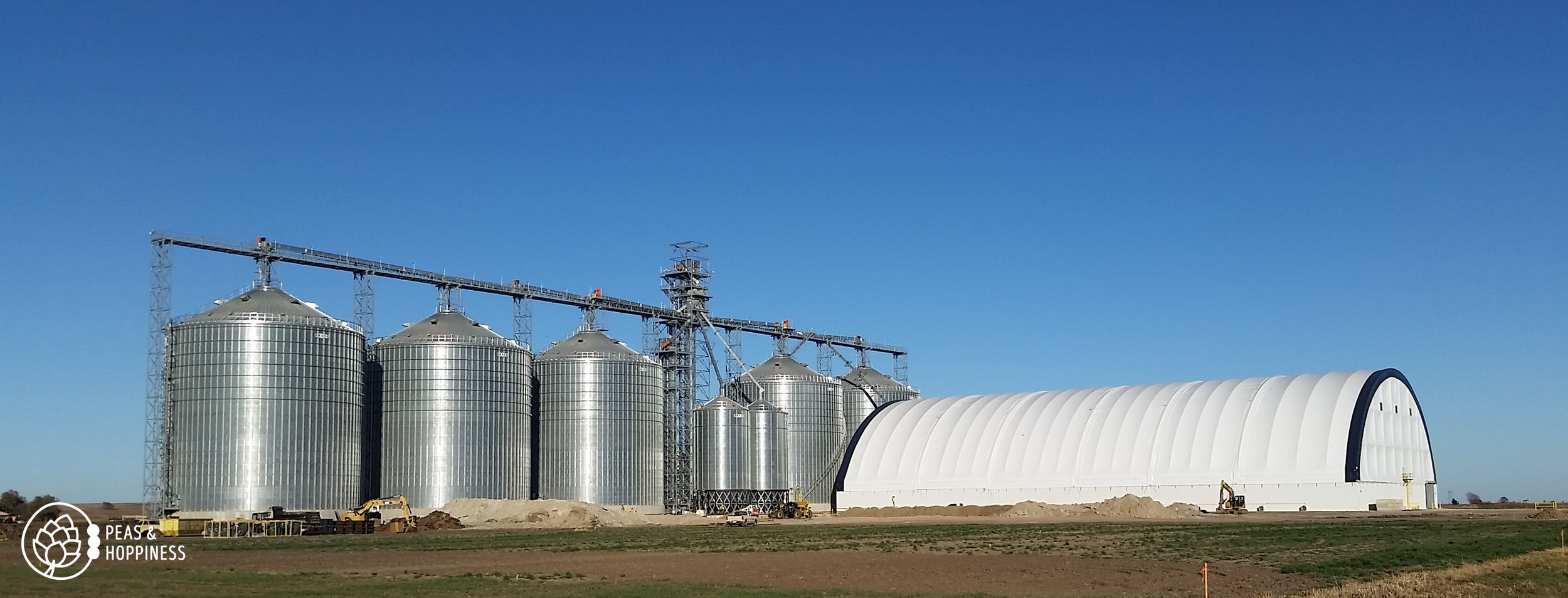
The permanent metal grain storage bins are full, so the the enormous white structure in the foreground was erected for temporary storage this season. See those teeny-tiny back-hoes in front of the building? To give you perspective, those are actually 10-foot-tall pieces of equipment. The tower in the picture is approximately 150 feet tall.
Human Food
Grains: wheat, corn, soybeans, sorghum (milo)
In terms of grains we eat, wheat (especially hard red winter wheat, the primary class of wheat grown in Kansas) is the most common grain that we consume directly as human food. Some of Dad’s wheat even goes straight from his farm to one of the mills in Kansas – they’re located all over the state. Check out the list here if you wonder where your flour comes from.
In Kansas, corn is mainly used to feed animals. However, across the country and worldwide, this grain is used for a wide variety of food for human consumption. This includes corn meal (chips, tortillas, grits, cornbread, cereal), corn oil, high fructose corn syrup, and alcohol (like the delicious bourbon I sampled today). Corn is super efficient in terms of calories per acre, but many of these aforementioned high-calorie foods have been accused of contributing to the increase in obesity and diabetes in the U.S.
Soy in Kansas is primarily turned into oil. From the field, soybeans are trucked to a crush mill where the oil is extracted and then shipped to be packaged for consumers. The leftovers of this process is the soy meal, which is reclaimed for animal feed.
Sorghum isn’t a very popular grain (yet) for human consumption, but it’s actually a healthy gluten-free grain, much like brown rice or quinoa. It can be ground into flour or cooked whole and eaten as a side dish. My recipe for Savory Granola Bars includes this grain and The Kitchn blog also offers ideas of how to use this off-the-beaten-path grain.
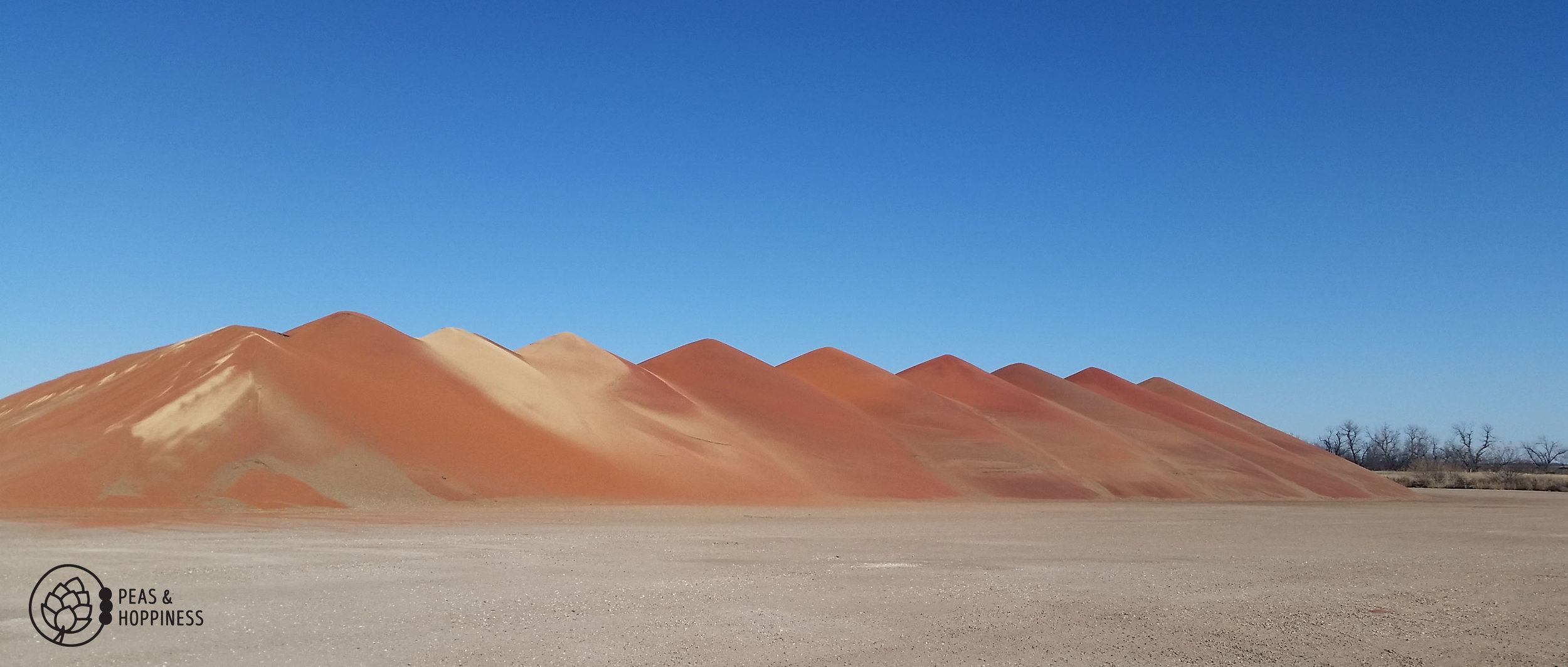
Giant piles of milo in Central Kansas, where the grain storage facilities are full
Exports
Grains: Corn, Soybeans, Wheat, Sorghum (milo)
Worldwide so many countries buy our grain! Although we only export 10-30% of corn, almost half of American soy is exported. This global market means that policies about tariffs (think: NAFTA, the TPP, and other trade agreements), conflict abroad, Brexit, income inequality of people in other countries, and so many more things affect the price of grain for American farmers.
It also means that surpluses in Russia can bottom out the international grain markets, while increasing prosperity in China creates much more demand for American grain. The international grain economy is an intricately woven tapestry with so many moving pieces it’s impossible to predict them all.
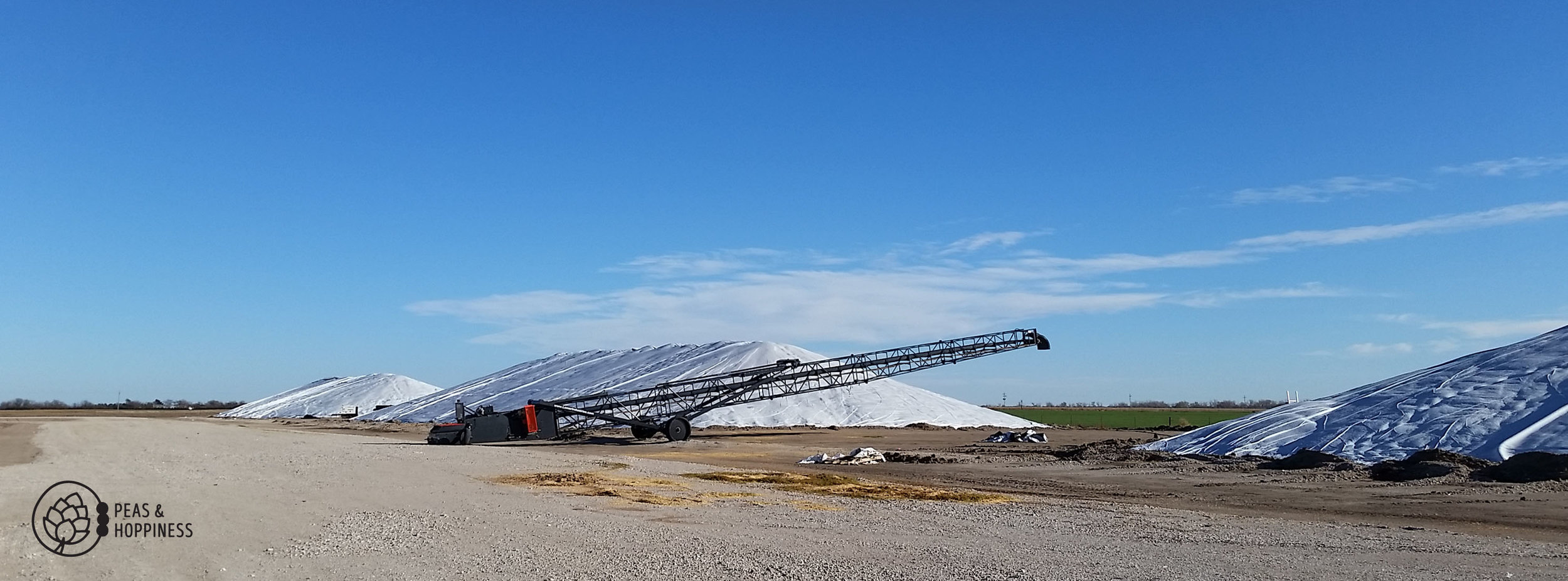
Giant piles of grain under white coverings, a little better protected from the elements
If you happen to be driving across the Mid-West in your holiday travels, don’t forget to look out the window. See how many grain piles you can spot – they may be camouflaged under white coverings or appear more like multi-color piles of sand, but don’t let this fool you! Remember: we’re all part of this ever-changing market economy. How do you fit in?
With love, from Peas and Hoppiness
Additional Sources:
Lee Scheufler, the dad/farmer who really knows everything (or at least has convinced me of that)
United States Department of Agriculture – Economic Research Service
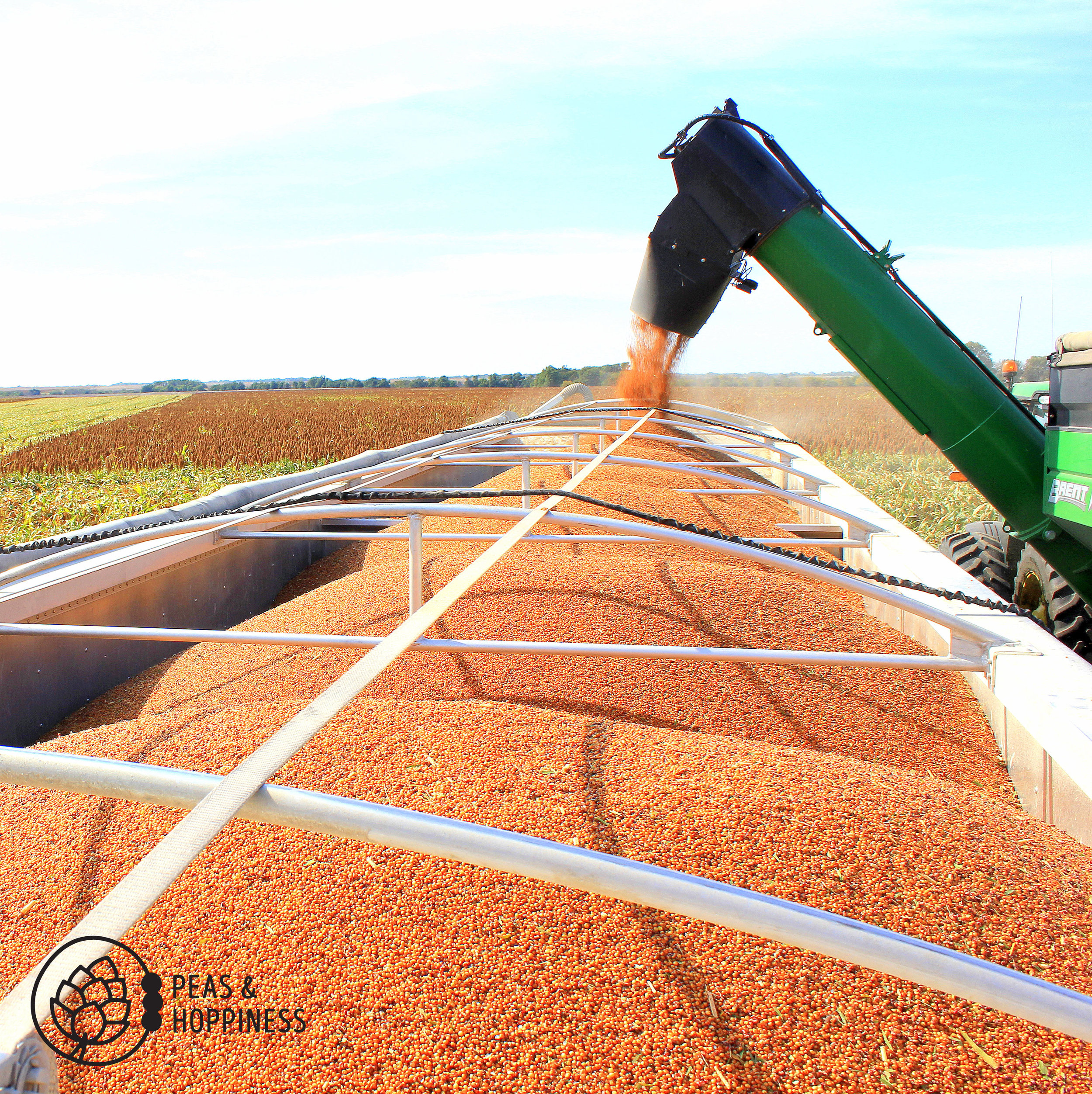
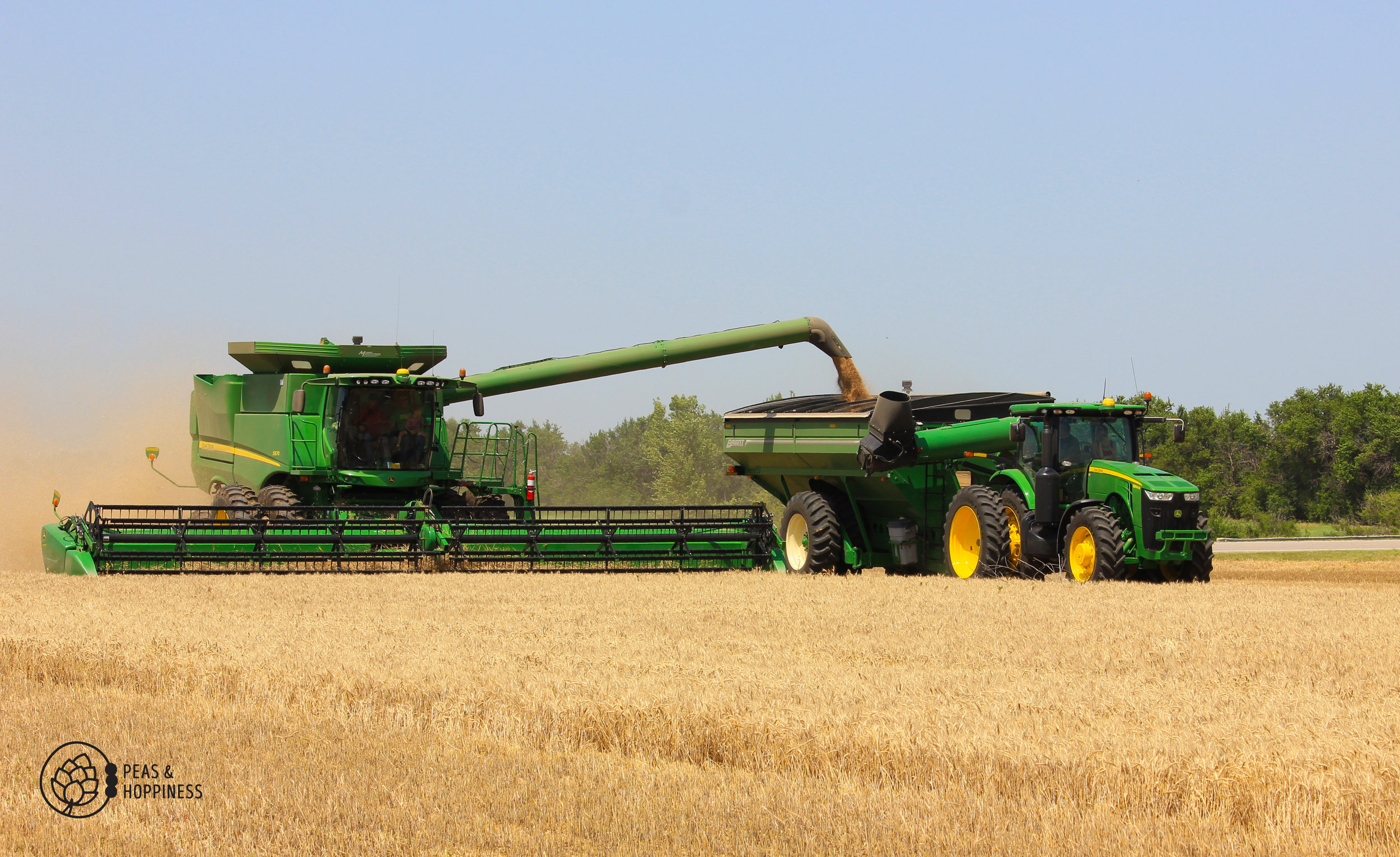
2 thoughts on “But Where Does it All Go?”
OH my goodness Ann. Just yesterday as I was in central Kansas driving to town I noticed the over abundant harvest being stored in those white plastic covered wind rows in a random pasture- about 4 miles from the town co-op. It’s crazy. The surplus is very large.
I think a good follow-up post could be: Now why don’t farmers adjust their production based on demand?
Great idea, Amanda! Not surprising, this was a table conversation over Thanksgiving. I’m also really interested in having you as a guest-blogger to write a little about urban agriculture. More on that later… 🙂